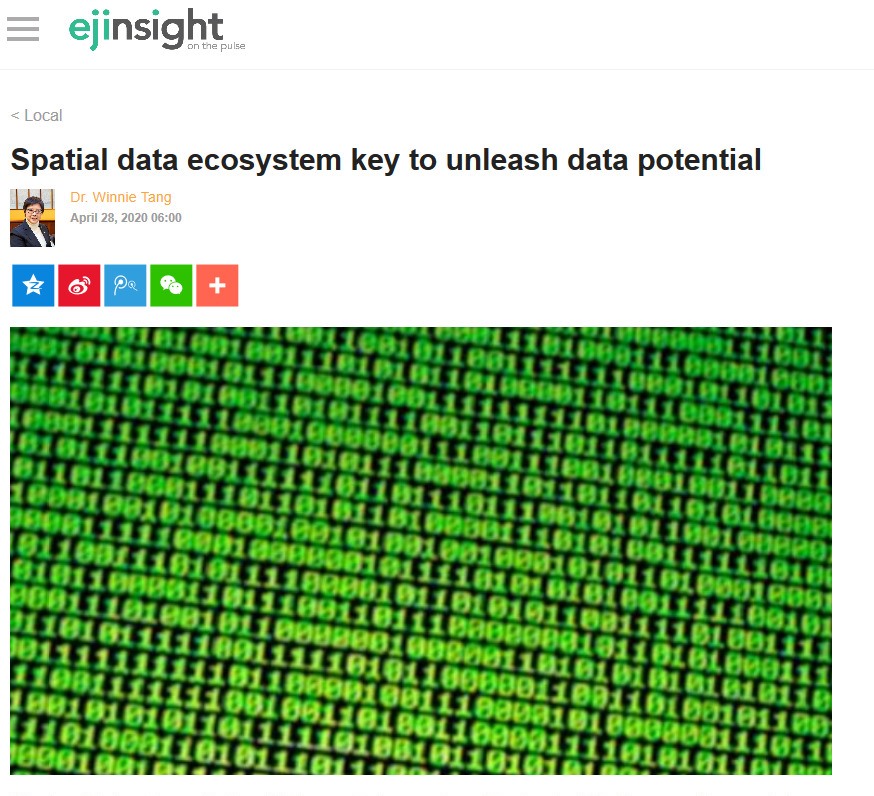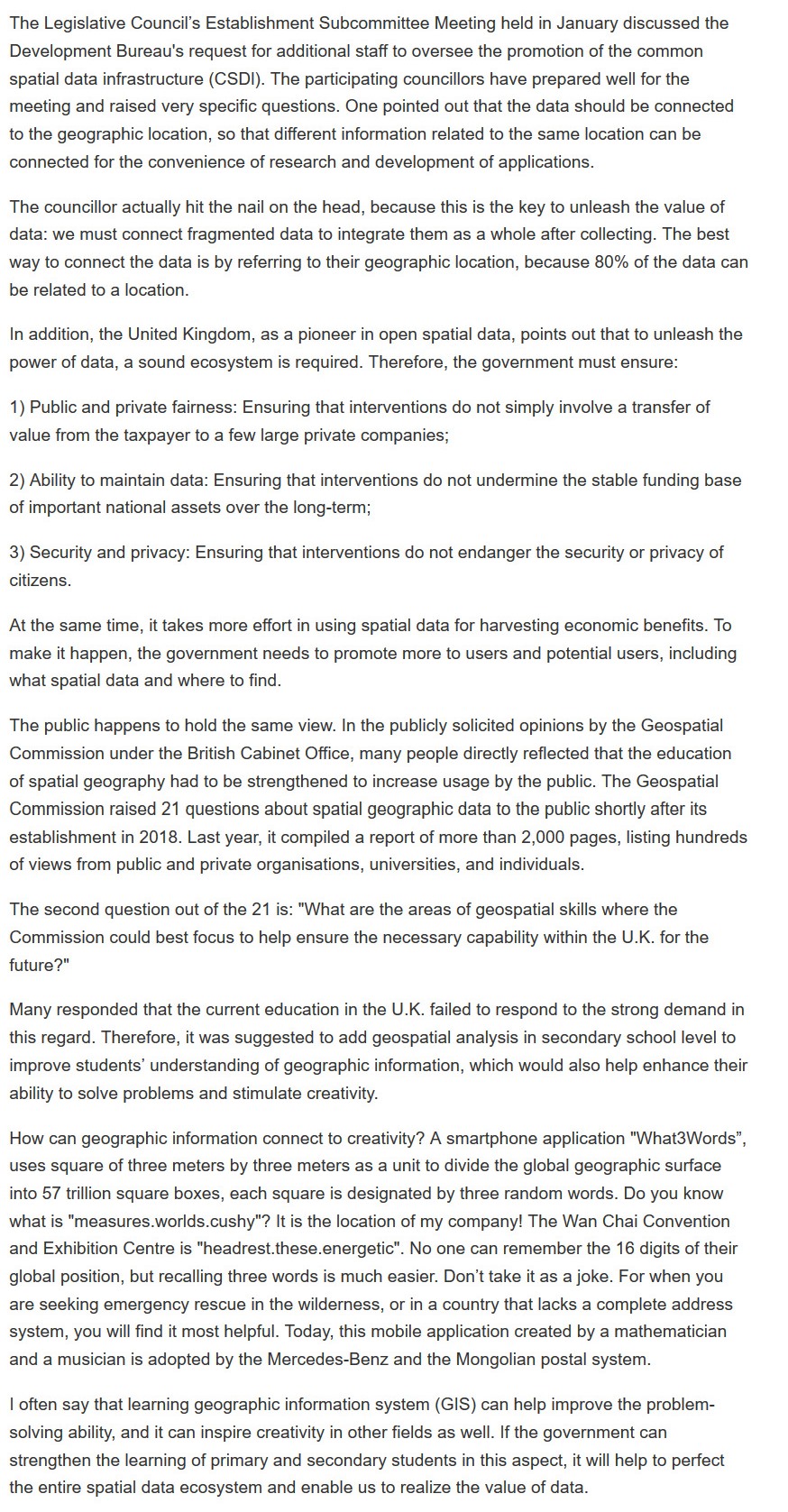網上版請按此


Spatial data ecosystem key to unleash data potential
The Legislative Council's Establishment Subcommittee Meeting held in January discussed the Development Bureau's request for additional staff to oversee the promotion of the common spatial data infrastructure (CSDl). The participating councillors have prepared well for the meeting and raised very specific questions. One pointed out that the data should be connected to the geographic location, so that different information related to the same location can be connected for the convenience of research and development of applications.
The councillor actually hit the nail on the head, because this is the key to unleash the value of data: we must connect fragmented data to integrate them as a whole after collecting. The best way to connect the data is by referring to their geographic location, because 80% of the data can be related to a location.
In addition, the United Kingdom, as a pioneer in open spatial data, points out that to unleash the power of data, a sound ecosystem is required. Therefore, the government must ensure:
1) Public and private fairness: Ensuring that interventions do not simply involve a transfer of value from the taxpayer to a few large private companies;
2) Ability to maintain data: Ensuring that interventions do not undermine the stable funding base of important national assets over the long-term;
3) Security and privacy: Ensuring that interventions do not endanger the security or privacy of citizens.
At the same time, it takes more effort in using spatial data for harvesting economic benefits. To make it happen, the government needs to promote more to users and potential users, including what spatial data and where to find.
The public happens to hold the same view. In the publicly solicited opinions by the Geospatial Commission under the British Cabinet Office, many people directly reflected that the education of spatial geography had to be strengthened to increase usage by the public. The Geospatial Commission raised 21 questions about spatial geographic data to the public shortly after its establishment in 2018. Last year, it compiled a report of more than 2,000 pages, listing hundreds of views from public and private organisations, universities, and individuals.
The second question out of the 21 is: "What are the areas of geospatial skills where the Commission could best focus to help ensure the necessary capability within the U.K. for the future?"
Many responded that the current education in the U.K. failed to respond to the strong demand in this regard. Therefore, it was suggested to add geospatial analysis in secondary school level to improve students' understanding of geographic information, which would also help enhance their ability to solve problems and stimulate creativity.
How can geographic information connect to creativity? A smartphone application "What3Words", uses square of three meters by three meters as a unit to divide the global geographic surface into 57 trillion square boxes, each square is designated by three random words. Do you know what is "measures.worlds.cushy"? It is the location of my company! The Wan Chai Convention and Exhibition Centre is "headrest.these.energetic". No one can remember the 16 digits of their global position, but recalling three words is much easier. Don't take it as a joke. For when you are seeking emergency rescue in the wilderness, or in a country that lacks a complete address system, you will find it most helpful. Today, this mobile application created by a mathematician and a musician is adopted by the Mercedes-Benz and the Mongolian postal system.
I often say that learning geographic information system (GIS) can help improve the problem-solving ability, and it can inspire creativity in other fields as well. If the government can strengthen the learning of primary and secondary students in this aspect, it will help to perfect the entire spatial data ecosystem and enable us to realize the value of data.
Dr. Winnie Tang
Adjunct Professor, Department of Computer Science, Faculty of Engineering and Faculty of Architecture, The University of Hong Kong